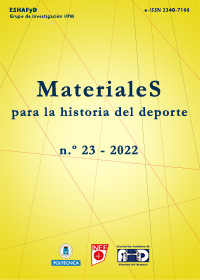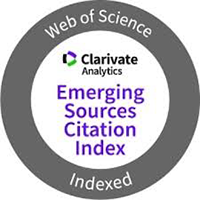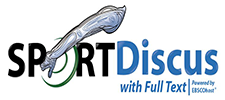Introduction of the western physical-sports activity in China. 1840-1924
DOI:
https://doi.org/10.20868/mhd.2022.23.4596Keywords:
Tiyu, Ticao, physical Education, sport, China, Olympic Games.Abstract
This paper consists of a description of how the process of introduction of western physical-sports activity in China was and who were its main protagonists. In particular, is analyzed the social and historical context that conditioned this moment; the important role played by foreign religious missions, and especially the Youth Men´s Christian Association (YMCA), in the expansion of sports culture throughout the country; the influence that gymnastics and sport had on the Chinese school curriculum; and the conditions that led this country to create the Chinese Olympic Committee and participate for the first time in an Olympic Games.
The content covers the historical period between 1840 and 1932, that is, between the time when China's compulsory opening to international trade takes place as a result of the military defeats suffered at the hands of foreign imperialist powers and the signing of so-called unequal treaties, and the moment when China first sends a sportsman to participate in the 1932 Los Angeles Olympics.
Downloads
References
An, Kang. 2020. To play or nt to pay: A historic overview of the Olympic movement in China from 1894-1984. Report, Master of Science in Kinesiology. University of Texas.
Andrews, Bridie. 2014. The Making of Modern Chinese Medicine, 1850-1960. Canada: UBC Press.
Behuniak, James. 2010. “Hitting the mark: Archery and ethics in early Confucianism”. Journal of Chinese Philosophy 37, n.º 4: 588-604.
Boucher, Aurélien. 2008. “The introduction of sports in China”. China Perspectives, n.º 1: 48-52. https://doi.org/10.4000/chinaperspectives.3313.
Cioffi-Revilla, Claudio y David Lai. 1995. “War and politics in Ancient China, 2700 B.C. to 733 B.C. Measurement and comparative analysis”. Journal of Conflict Resolution 39, n.º 3: 467-94.
Espina, Álvaro. 2005. “El darwinismo social: de Spencer a Bagehot”. Revista Española de Investigaciones Sociológicas 110, n.º 5: 175-87.
Gernet, Jacques. 2007. El mundo chino. Barcelona: Crítica.
Guoqi, Xu. 2008. Olimpic dreams. China and sports, 1895-2008. USA: Harvard University.
Harper, Donald. 1998. Early Chinese medical literature. The Mawangdui medical manuscripts. London & New York: Kegan Paul International.
Hong, Fan y He Gong. 2021. “The Asian Games, Asian sport and Asian politics”. En The Routledge Handbook of Sport in Asia, coordinado por Fan Hong y Lu Zhouxiang, 493-505. London & New York: Routledge.
Hwang, Dong-Jhy y Li-Ke Chang. 2008. “Sport, Maoism and the Beijing Olympics”. China Perspectives, n.º 1: 4-17. http://doi.org/10.4000/chinaperspectives.3223.
Jarvie, Grant, Dong-Jhy Hwang y Mel Brennan. 2008. Sport, Revolution and the Beijing Olimpics. New York: Berg.
Kobayashi, Koji y Younghan Cho. 2021. Asian Sport Celebrity. London & New York: Routledge.
Lo, Vivienne. 2014. How to the Gibbon Walk: A translation of the pulling book (ca 180 BCE). England: Needham Research Institute Working Papers.
McCurley, Dallas. 2005. “Juedixi: An entertainment of war in early China”. Asian Theatre Journal 22, n.º 1: 87-106.
Mezcua, Antonio José. 2012. “Introducción a la historia de los deportes en la China antigua”. Materiales para la Historia del Deporte, nº 10, 105-16.
Morris, Andrew. 1999. “'I can compete' China in the Olimpic Games, 1932 and 1936”. Journal of Sport History 26, n.º 3: 545-66.
Morris, Andrew. 2000. “To make the four hundred million move: The late Qing Dynasty origins of modern China sport and physical culture”. Comparative Studies in Society and History 42, n.º 4: 876-906.
Morris, Andrew. 2004. Marrow of the Nation. A history of sport and physical culture in Republican China. London & Los Angeles: University of California.
Paik, Wooyeal y Daniel A. Bell. 2004. “Citizenship and state-sponsored physical education: Ancient Greece and ancient China”. The Review of Politics 66, n.º 1: 7-34.
Reaves, Joseph A. 2006. “China: Silk gowns and gold gloves”. En Baseball without borders. The international Past Time, editado por George Gmelch, 43-64. Lincoln: University of Nebraska.
Schiffrin, Harold Z. 1968. Sun Yat-sen and the origins of the Chinese Revolution. Berkeley & Los Angeles: University of California.
Schirokauer, Conrad y Miranda Brown. 2011. Breve historia de la civilización China. Barcelona: Bellaterra.
Speak, Mike. 1999. “China in the modern World: 1840-1949”. En Sport and Physical Education in China, editado por James Riordan y Robin Jones, 70-89. London: International Society for Comparative Physical
Education and Sport (ISCPES).
Villela, Fabiola y Jorge E. Linares. 2011. “Eugenesia. Un análisis histórico y una posible propuesta”. Acta Bioethica 17, n.º 2: 189-97.
Wells, Audrey. 2001. The political thought of Sun Yat-sen. Development and impact. New York: Palgrave.
Wu, Yi-Li. 2013. “The Qing period”. En Chinese Medicine and Healing. An Illustrated History, coordinado por T.J.
Hinrichs y Linda L. Barnes, 161-207. USA: Harvard University Press.
Yuxiang, Bai. 2009. “Archeological discoveries and Qin-Han period sport and games”. Chinese Archology 9, n.º 1: 47-54.
Zhang, Huijue. 2015.“Missionary schools, the YMCA and the transformation of physical education and sport in modern China (1840-1937)”. Tesis Doctoral. University of Western Australia.
Zhang, Huijue, Fan Hong y Fuhua Huang. 2017. Christianity and the transformation of physical education and sport in China. London & New York: Routledge.
Zhang, Ling. 2021. “Liu Changchun: China’s first Olympic athlete”. En The Routledge Handbook of Sport in Asia, coordinado por Fan Hong y Lu Zhouxiang, 559-62. London & New York: Routledge.
Zhouxiang, Lu y Fan Hong. 2014. Sport and nationalism in China. London & New York: Routledge.
Downloads
Published
Issue
Section
License
Authors who submit to this journal agree to the following terms:
- Author(s) keep copyright and guarantee to the journal the right to be the first publication of the work as licensed under Creative Commons Attribution-Noncommercial-ShareAlike 4.0 International as initial publication in this journal.
- Author(s) can establish additional agreements for non-exclusive distribution of the version of the work published in the journal (for example, to an institutional archives or to publish it in a book), with an acknowledgment of its initial publication in this journal.
- It is allowed and authors are encouraged to disseminate their work electronically (e.g, in institutional open archives or on their own website) before and during the submission process, as it can lead to productive exchanges, as well as a citation earlier and more of published work (See the Effect of Open Access).












